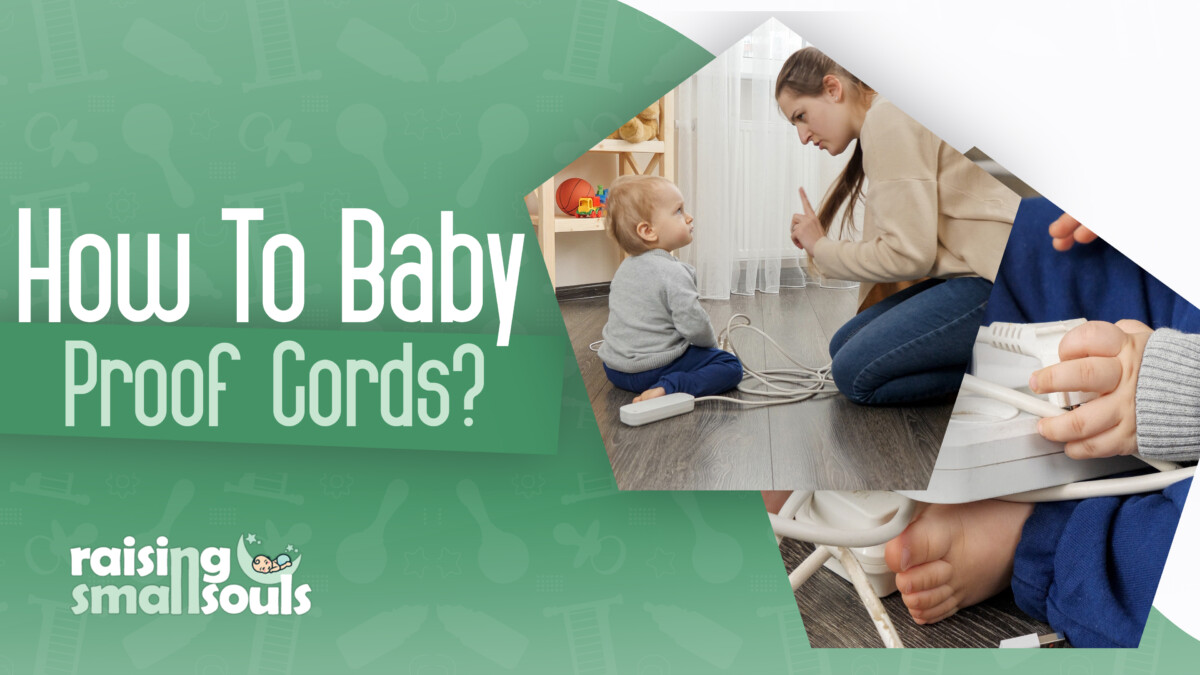When you welcome a new family member, and they start crawling and exploring everything around them, there are a lot of things you need to worry about.
One of those things is power cords. You needn’t let your baby come in contact with electricity. This is dangerous for any adult, let alone a little baby. That’s why we’re here to give you tips and tricks on babyproofing cords.
Main Points
- Cords are very dangerous for children because of electricity.
- Avoiding electrical outlets and cords is best for your child.
- However, children are curious, so babyproofing your cords is for the best.
- You can do that by getting a cord cover or shortener, strapping cords down, and using cord protectors and cord sleeves.
- Explaining the dangers of power cords (especially damaged ones) to a child is crucial.
Why are Electrical Cords Dangerous
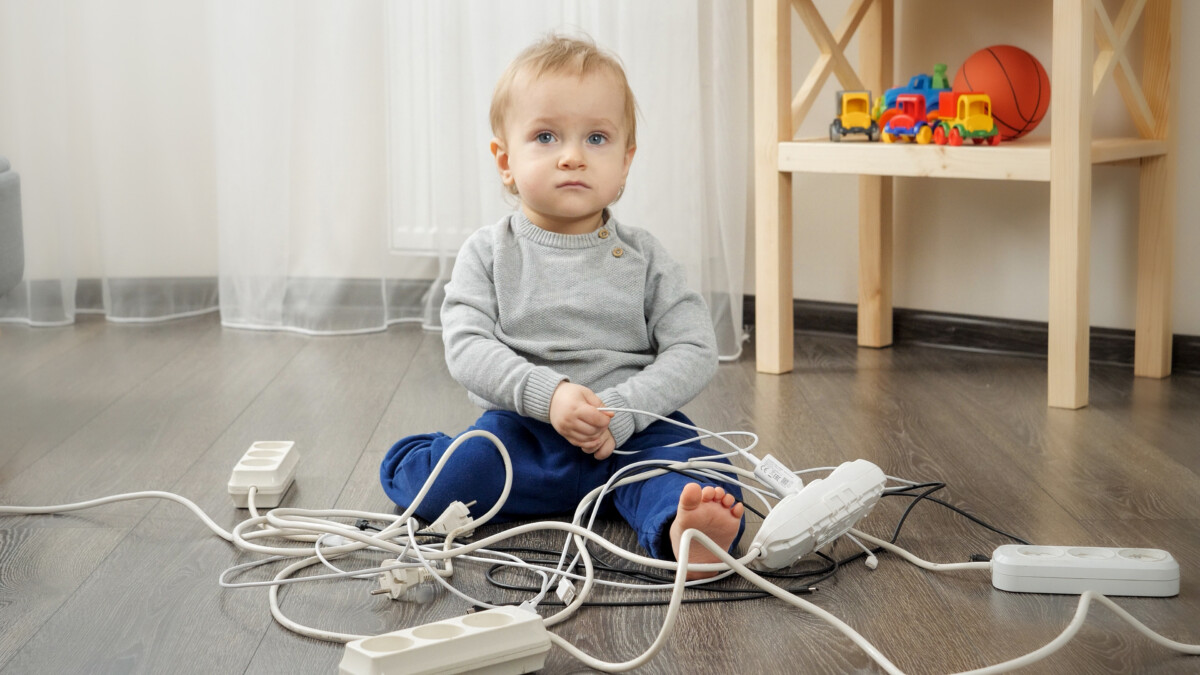
Electrical cords are dangerous overall. However, they are dangerous for babies especially. That is because babies are known to chew on cords, trip on them, get entangled, or end up choking themselves with the cord in a worst-case scenario.
However, coming in contact with electrical cords is unavoidable. They are all around us. Whether it’s the TV cable, your phone, laptop, vacuum cleaners, toasters, or lamps, they have been proven dangerous for children and pets, time after time.
This is why you need to get to work if you have a little baby that you want to keep safe. Babyproofing your electrical cords are a must.
Also Read: How You Can Baby Proof a Fireplace
How Can You Babyproof Electrical Cords
There are a few ways you can babyproof electrical cords.
First, you must assess the risks they could bring, evaluate where and what needs to be covered or taped, and start acting. Then you can think about whether you should get a cord cover, strap them down, tape them, or use cord sleeves or cord protectors.
Let’s say a little about each and every one of these methods.
Assess the Risks
The first thing you will want to do is look at all the power outlets and see where the power cords are visible to your child and within their reach. Once you’ve determined this, a simple thing you can do is strategically place furniture in front of the outlets so they’re not in the open.
Get a Cord Cover or Shortener
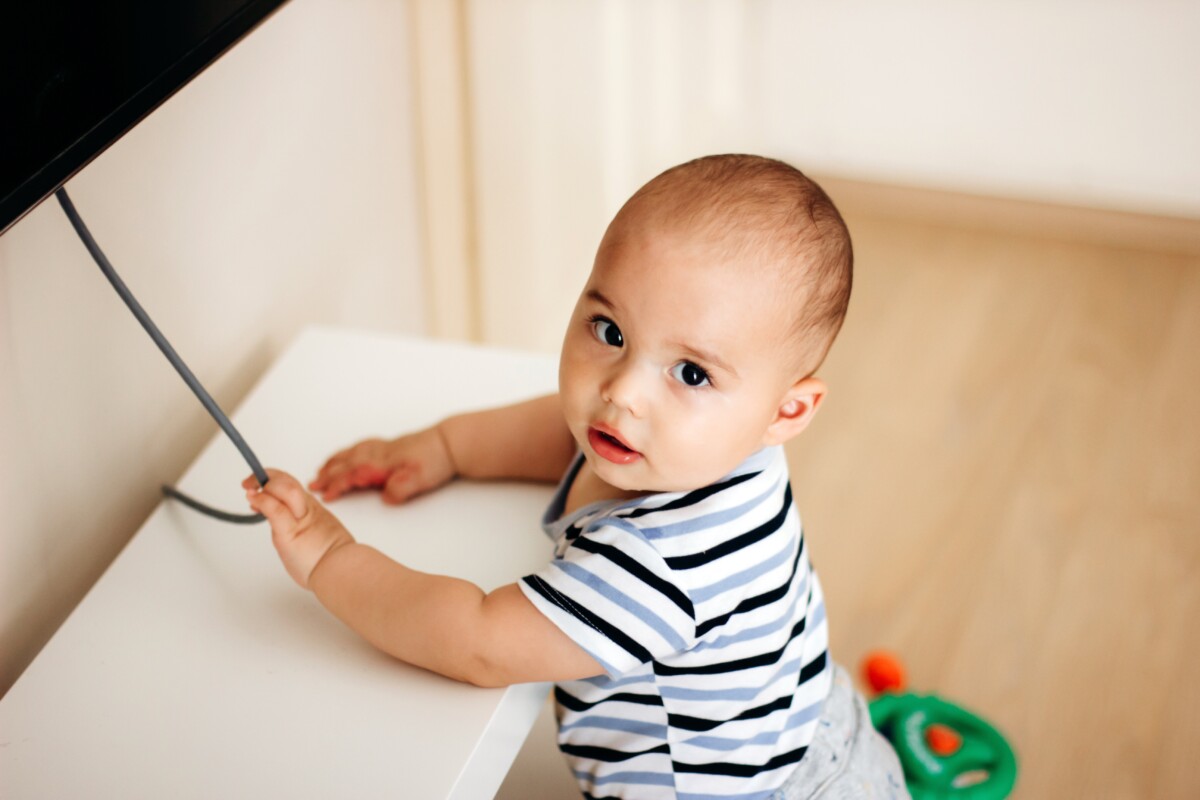
If any outlet is exposed and you can’t do much about hiding it from your kid, you can cover it up or use a Cord shortener.
Both cord covers and shorteners help in preventing the cable from being tugged and pulled by not being out in the open.
Cord covers usually come with an outlet cover as well. This helps cover up not only the cord but also the plug, which leads to a lesser likelihood of your child pulling out the cord and injuring themselves.
Cord shorteners are used to shorten, a.k.a. store together, the excess cables. In fact, this is super effective and useful for very long cords. However, if you use a cord shortener, your child won’t have as much room to play with the long cable.
Also Read: Baby Is Fake Coughing, should you worry?
Strap Cords Down
Whether this is behind your PC or your TV, strapping cords down and putting them behind something or under your carpet can save you and your child a lot of trouble.
You can use a cord tunnel, a duct, or even electrical tape to adhere them to the floor or wall. This is very useful as it keeps all of the long cords away from your little one’s tiny, curious, little fingers.
Strapping the cords down also prevents your baby from tripping on them and falling and pulling on them. You will also feel at ease knowing that your child won’t be able to bite and chew on the cords either.
Use Cord Protectors
When it comes to your child trying to bite and chew on the cords, cord protectors are your best bet. They keep your cords safe from external damage, whatever that might be.
This doesn’t only protect your cords from being bitten, bent, or ruined. It also protects your child from being electrocuted and injured by already damaged cords.
Cord protectors are a phenomenal tool for parents with rowdy children that don’t want to bother changing their cords every so often.
Use a Cord Sleeve
A cord sleeve is yet another great way to keep your cords organized tightly together, all the while caring about your baby’s safety in your household.
Cord sleeves are most useful in places where you need to organize and keep a few cords together, so your cords are a lot tidier and less dangerous by default. This is usually around your computer or your TV.
If there are too many cords that you don’t know what to do with, they take up space and pose a risk to your baby’s safety. A cord sleeve is a way to go.
Not only will you have all of your cords organized together, but also you won’t need to worry about your child tripping on them, bending them, and damaging them (which happens when your baby pulls and chews on them while playing with them).
Explain the risks of electricity to your child
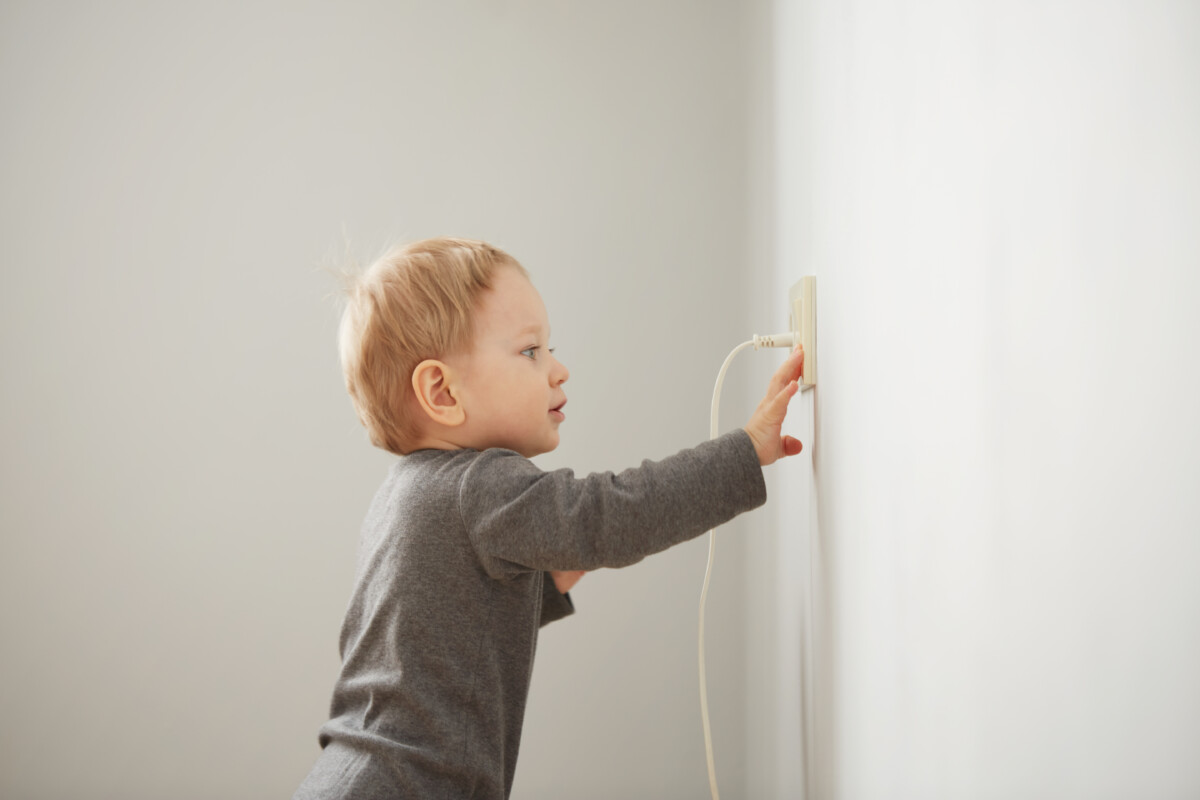
Once your child is old enough to crawl, their curiosity is going to blossom into a little bit of rowdiness. However, once they’re old enough to walk, they’re also old enough to understand the importance of not touching electrical cords or outlets.
Explain to your children how to efficiently use electricity and stay away from danger. Make rules about who can and who can’t touch plugs and appliances. For this reason, it’s also best to stay away from outlets.
Teaching your child to keep water away from electricity is also a crucial lesson.
Supervise your little ones, always. Never let them explore outlets or cords. And as a parent, don’t forget to unplug any iron, blowdryer, or toaster you aren’t currently using.
That being said, don’t plug or unplug cords in front of your little ones, as they love copying your behavior. Therefore, avoid accidentally being an example and teaching them how to put or remove cords from outlets while they’re too young.
Also Read: How You Can Baby Proof a Cabinet
Final Words
To conclude, babyproofing electrical cords is of utmost importance when your family gains a new member.
Once your baby learns how to crawl, it will definitely play with any kind of equipment you have lying around in your house. This is why you should make sure that your child is safe by keeping dangerous sharp objects or electricity away from your child at all costs.
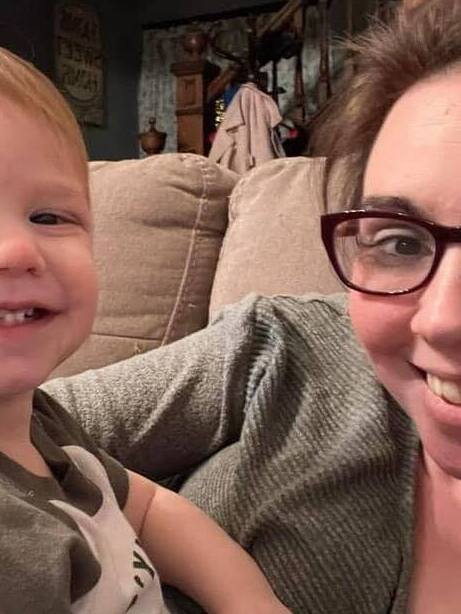
When it comes to raising children, there’s a lot to learn! I’m here to share everything i learnt along the way.

